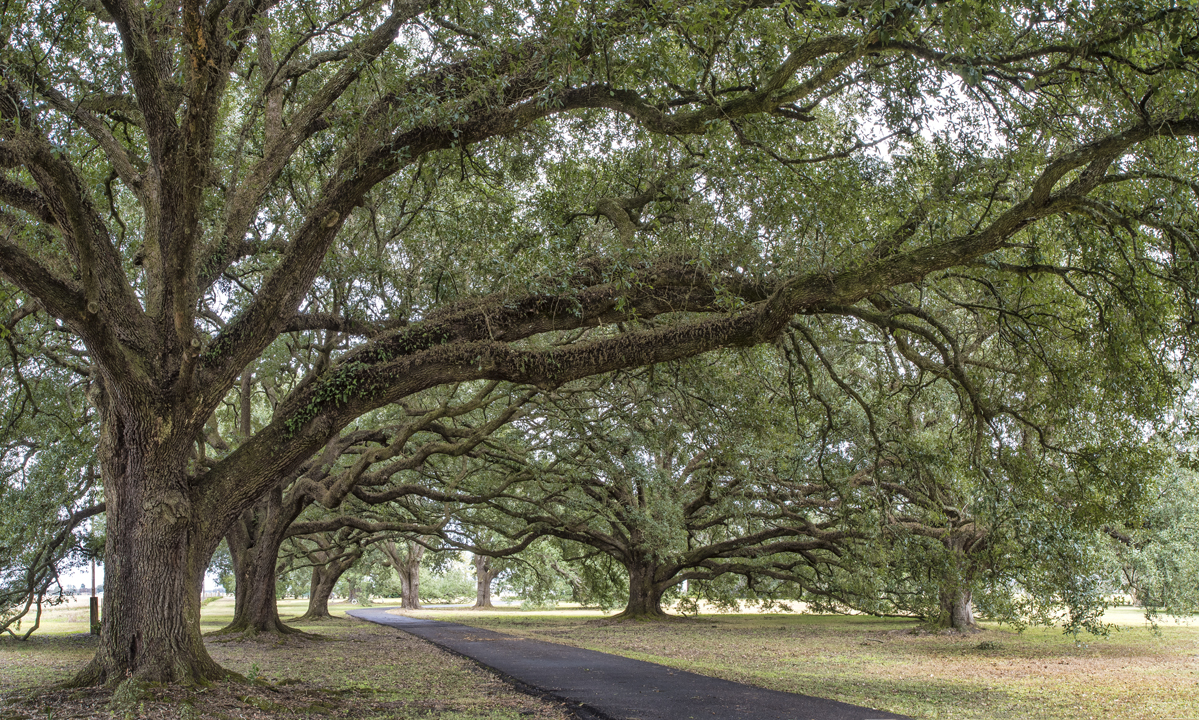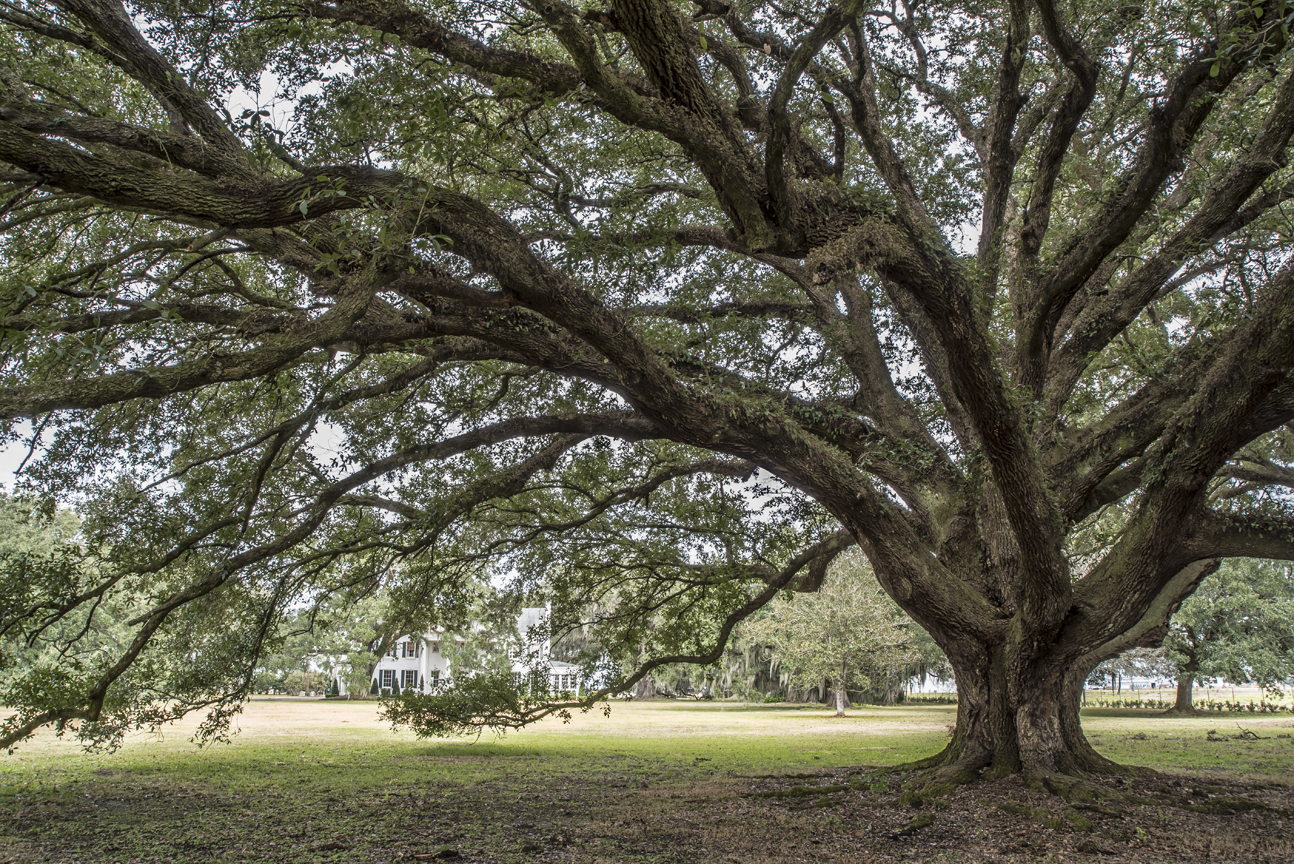The Coulon Plantation oaks are located at the corner of Hwy 308 and Hwy 3266 across from the Tiger Drive Bridge.
According to information from descendants of the Leche and Caldwell families, the Coulon House was built around 1940–1941 by John (Jean) Leche for his wife Albertine P. Leche. Leche bought Coulon plantation from E.G. Robichaux and Thomas H. Rogers, possibly in the 1930s.

Coulon Plantation was named for Victor Coulon, who, according to Charles J. Coulon, lived on the property prior before 1830, and Charles Coulon and his wife Pauline Ledet lived on the property until it sold in 1835 to Thomas Bibb, who also purchased Rienzi Plantation in that same year. Bibb served as the second governor of the state of Alabama between 1820 and 1821 and likely kept a home on Bayou Lafourche as a second or third residence. Bibb’s main residence was in Alabama. (NOTE: According to Charles Coulon, Victor Coulon owned the property and did live in Lafourche, but by 1836 gad moved back to France. The Victor Coulon in Jefferson Parish was a different Coulon.

If you’ve read several of the live oak stories on this tour, you’ll likely notice some names repeated as owners of multiple plantation properties around Bayou Lafourche (like Thomas Bibb, Henry S. Thibodaux, William Fields, and the Pugh family). In 1795, the first successful large-scale granulation of sugar that occurred near New Orleans opened the way for sugarcane to become a highly profitable crop in Louisiana, far more than tobacco or indigo.

Prior to the Louisiana Purchase in 1803, large tracts of land, called concessions, were granted to very influential people by the ruling governments of France and Spain. Many of these wealthy individuals never even visited Louisiana but still built large agricultural estates. The poorer colonists generally received smaller land grants, called habitations, that had a standard narrow width fronting the bayou or other waterways and stretched back a mile or more into the swamps. These early settlements along Bayou Lafourche developed into a patchwork of landholdings ranging from huge plantations to one- or two-acre vegetable farms. These patterns of settlement can still be seen today. If you cross one of the Mississippi River bridges in rural areas like Gramercy or Donaldsonville, you can look down and see the outlines of long, ribbon-shaped properties even today.
When sugar and cotton became profitable in the 1800s, planters and real-estate speculators purchased many of the original small Acadian land-grant farms and consolidated them into large plantations. This began the era of huge wealthy plantations in Louisiana that lasted through the Civil War and the emancipation of slaves.
The Lafourche Live Oak Tour was created through the generous support of Louisiana’s Cajun Bayou Tourism. For more information on Lafourche Parish events and activities, visit their website at LACajunBayou.com.


The Victor Coulon who owned the property did live in Lafourche, either there or directly across 3266. By 1830 he had moved back to France. There was another Victor Coulon who lived in JP, and that’s who appears on the census. Charles Coulon would have lived there in 1830 with Pauline Ledet.
Whoops! Sorry, Victor left in 1836.